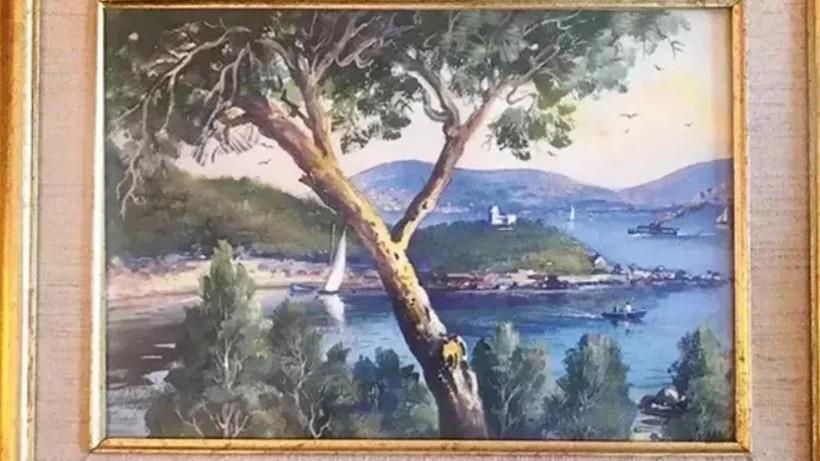Historic painting in İzmir home traced to one of first Ottoman female painters
İZMİR

A painting that has hung on the wall of a house in the western city of İzmir for over half a century has been identified as the work of Muide Esad, one of the Ottoman Empire’s first generation of female painters.
The painting’s years-long journey traces back to 1972, when dentist Efe Erginer moved from Istanbul to İzmir with his family.
At a farewell dinner, poet İdris Pura gifted him two artworks, one an oil landscape, the other a gouache painting of Istanbul.
The second piece, which appeared to be a simple watercolor at first glance, became a conversation piece among visitors for years.
One day, upon closer inspection, Erginer noticed vivid details — the hills of Kandilli, sailing boats, a woman in a ferace cloak and seagulls gliding over the Bosporus.
With a magnifying glass, he found a faint signature in the corner: “Muide Esad.”
From that moment, he began searching for the mysterious artist.
He consulted art historians, museum experts and antique dealers in İzmir and Istanbul, but none recognized the name.
Some speculated that the artist might have been a woman from the Ottoman palace, as talented members of the harem, a space that is reserved for women, were known to receive private art lessons.
To determine the painting’s setting, Erginer even took it to Istanbul’s Princes’ Islands.
Years later, he encountered veteran journalist and author Hıfzı Topuz at a book signing.
While reading Topuz’s novel “The Three Roses of Çamlıca,” he noticed a reference to Muide Esad as “the daughter of Professor Dr. Esad Işık Pasha.”
Erginer reached out to Topuz, who confirmed the artist’s identity after seeing the painting, writing on its back: “This painting was made by Muide Esad, daughter of Professor Dr. Esad Işık Pasha.”
Muide Esad was the granddaughter of prominent 19th-century statesman Sadullah Pasha and the daughter of eye doctor Professor Dr. Esad Işık Pasha, founder of the First National Congress.
In 1914, she became the second enrolled student at the Fine Arts Academy for Girls, which later evolved into today’s Mimar Sinan Fine Arts University.
Muide Esad’s legacy places her among the pioneering women who entered formal art education in the Ottoman Empire. Her classmates included Nazlı Ecevit, mother of former Turkish prime minister Bülent Ecevit and renowned painter Fahrünnisa Zeyd.
Despite her talent and unique place in history, Muide Esad remained largely absent from Turkish art literature.
Researching her life inspired Erginer to write the novel “The Painting on the Wall,” blending fiction with the real-life story of the long-lost artist and her rediscovered work.
















